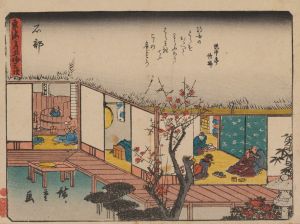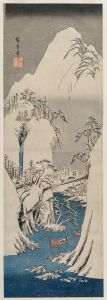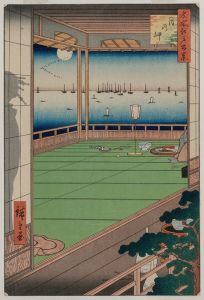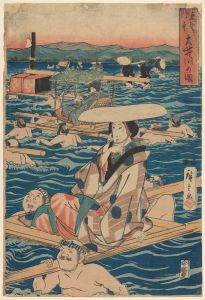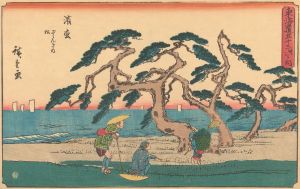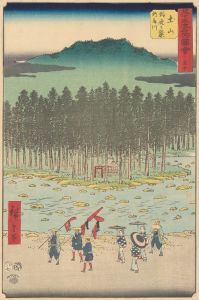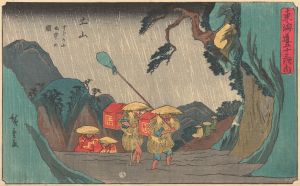
The Fifty-Three Stations of the Tokaido: Chiryu
A hand-painted replica of Andō Hiroshige’s masterpiece The Fifty-Three Stations of the Tokaido: Chiryu, meticulously crafted by professional artists to capture the true essence of the original. Each piece is created with museum-quality canvas and rare mineral pigments, carefully painted by experienced artists with delicate brushstrokes and rich, layered colors to perfectly recreate the texture of the original artwork. Unlike machine-printed reproductions, this hand-painted version brings the painting to life, infused with the artist’s emotions and skill in every stroke. Whether for personal collection or home decoration, it instantly elevates the artistic atmosphere of any space.
"The Fifty-Three Stations of the Tokaido: Chiryu" is a woodblock print by the renowned Japanese ukiyo-e artist Andō Hiroshige. This print is part of Hiroshige's famous series "The Fifty-Three Stations of the Tokaido," which depicts the various stations along the Tokaido road, a vital route connecting the cities of Edo (modern-day Tokyo) and Kyoto during the Edo period in Japan. The series was first published between 1833 and 1834 and is considered one of Hiroshige's masterpieces, showcasing his skill in landscape art and his ability to capture the essence of each location.
Chiryu, the subject of this particular print, was the thirty-ninth station on the Tokaido road. Located in present-day Aichi Prefecture, Chiryu was historically known for its horse market, which is vividly depicted in Hiroshige's work. The print captures the bustling activity of the market, with figures engaged in the buying and selling of horses, a significant economic activity in the area at the time. The scene is set against a backdrop of lush trees and a clear sky, typical of Hiroshige's style, which often combines human activity with natural beauty.
Hiroshige's depiction of Chiryu is notable for its dynamic composition and attention to detail. The figures in the print are rendered with a sense of movement and purpose, reflecting the lively atmosphere of the market. The use of color and line work is characteristic of Hiroshige's technique, with a harmonious blend of blues, greens, and earthy tones that bring the scene to life. The print also features Hiroshige's signature use of perspective, guiding the viewer's eye through the composition and creating a sense of depth.
"The Fifty-Three Stations of the Tokaido" series was highly popular in its time and remains influential in the art world today. Hiroshige's work not only provides a visual record of the Tokaido road and its stations but also offers insight into the culture and daily life of the Edo period. His ability to capture the spirit of each location, combined with his innovative use of color and composition, has earned him a lasting legacy as one of Japan's greatest ukiyo-e artists.
Hiroshige's prints, including "Chiryu," were produced using the traditional ukiyo-e woodblock printing technique. This involved carving the image into a wooden block, applying ink, and then pressing paper onto the block to create the final print. The process required collaboration between the artist, carver, printer, and publisher, each contributing their expertise to produce the finished artwork. Hiroshige's collaboration with skilled craftsmen ensured the high quality and artistic integrity of his prints.
Today, "The Fifty-Three Stations of the Tokaido: Chiryu" is appreciated not only for its artistic merit but also for its historical significance. It provides a window into the past, allowing modern viewers to experience the sights and sounds of the Edo period through Hiroshige's eyes. The print is held in various museum collections worldwide, where it continues to be studied and admired by art enthusiasts and historians alike.





